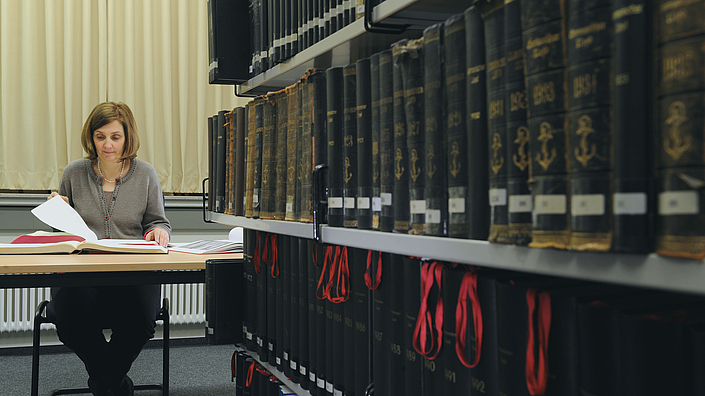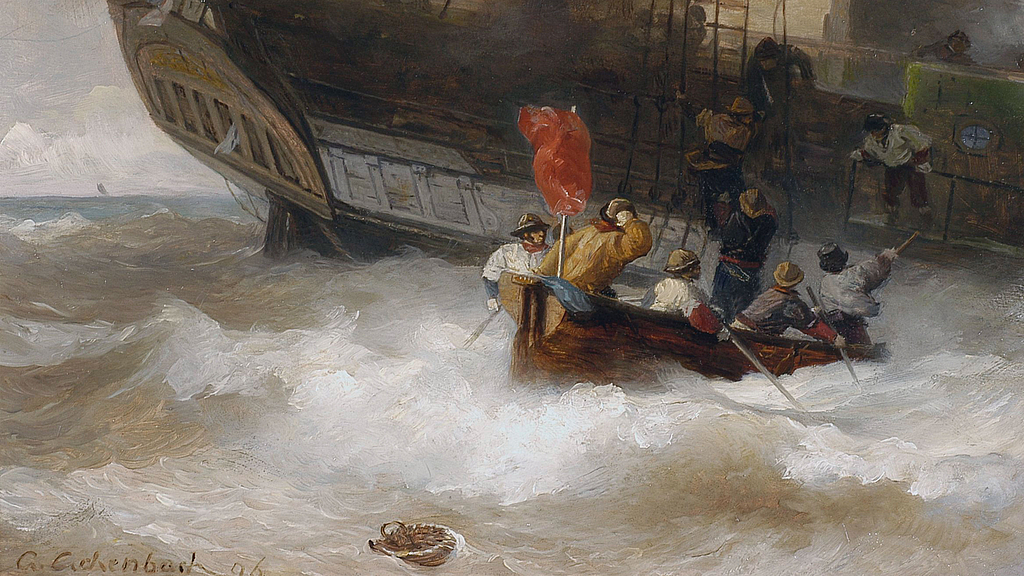Perspectives of maritime art
Maritime art in the German Maritime Museum has been the focus of historical research by Eva-Maria Bongardt since 2016.
Since its founding in 1971 until today, the German Maritime Museum (DSM) has built up one of the largest picture holdings on maritime art in Germany, comprising around 3,000 paintings, numerous graphics and a photo collection of around 250,000 images. The focus of the collection is art with a maritime theme with particular attention on German art, so the exquisite collection represents mainly the period of the 19th to 21st centuries. The DSM also has older works of art from the Netherlands and England.
The scientific research of this picture collection has been a high priority since the founding of the DSM. Many works were found with biographical approaches as well as diachronic overviews on the development of maritime art, particularly in Germany. Today these works represent important foundational work for the collection-based art-historical research of our own art collection in the DSM.
Contact
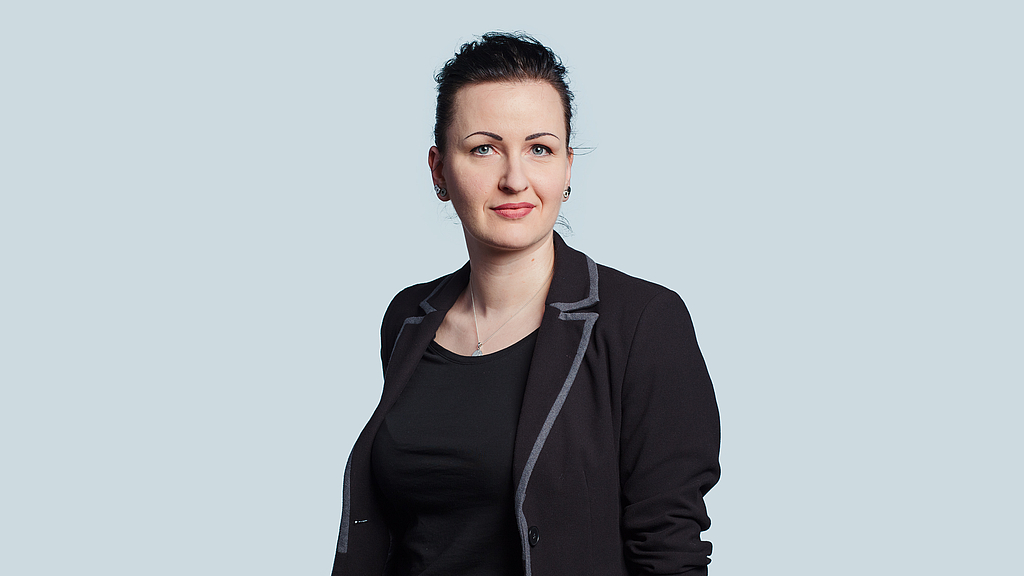
Eva-Maria Bongardt
What is "maritime art" anyway?
The term "maritime art" would appear at first glance to be clear. Especially in a seaside city like Bremerhaven where the connection to the sea and maritime themes is very intense, just about every visitor has an idea of what type of art could lie behind this term. But a look into the current research landscape reveals that maritime art has barely been researched in art history and so there is as yet no strict definition. Maritime art is characterised by great variation in its themes. The works of art might be considered as belonging to the landscape genre here or industrial art there or to another genre altogether.
The term "maritime art" therefore functions rather as a stopgap definition and a general term. This is astonishing because various successful exhibition projects in the recent past have shown that art with a maritime theme is greatly appreciated by the public and has wide-ranging appeal. Increasingly, it is the museums for culture and technological history, of which the German Maritime Museum is one example, that are making their excellent art collections available to the wider public and thus make the existing research gaps in this area all the more clear. Eva-Maria Bongardt's research looks above all at the question of how maritime art can be made tangible as its own genre with the corresponding conception, and how it should be exhibited.
further reading
Faas, Martin; Krämer, Felix; Schneede, Uwe M. (Hrsg.) Seestücke
Von Caspar David Friedrich bis Emil Nolde [Katalog zur Ausstellung vom 24. Juni bis 11. September 2005 im Huber-tus-Wald-Forum in der Hamburger Kunsthalle]
München 2005
Hinrichs, Nina Wattenmeer und Nordsee in der Kunst. Darstellungen von Nolde bis Beckmann
Göttingen 2017
Krämer, Felix; Faas, Martin; Gaßner, Hubertus (eds.) Seestücke
Von Max Beckmann bis Gerhard Richter [Katalog zur Ausstellung vom 8. Juni bis 16. September 2007 im Hubertus-Wald-Forum und in der Galerie der Gegenwart der Hamburger Kunsthalle]
München 2007
Meyer-Friese, Boye Marinemalerei in Deutschland im 19. Jahrhundert
Oldenburg 1981
Scholl, Lars U. Deutsche Marinemalerei 1830-2000
Helgoland 2002
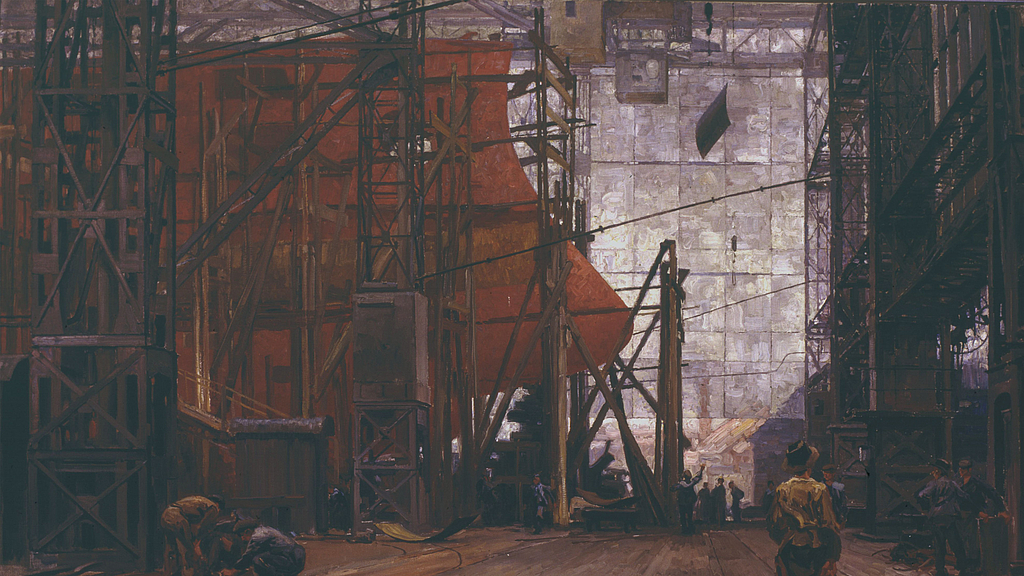
Heinrich Kley, Linienschiff auf der Germania Werft (Ferry at the Germania wharf), 1906, DSM
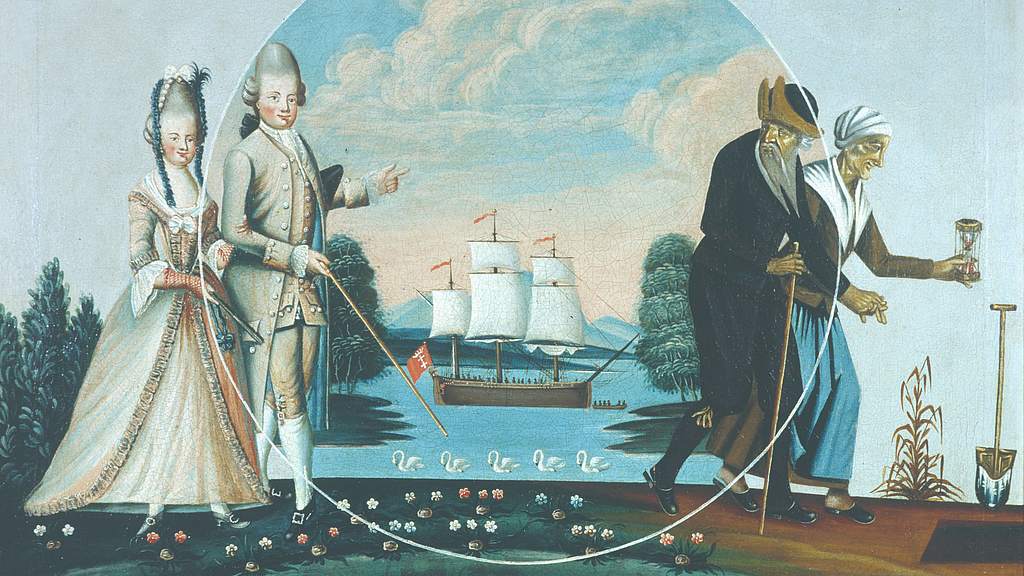
Unknown artist, Durchgang durch die Welt (Passage around the world), around 1780, DSM
Why does the German Maritime Museum need art?
In all the enthusiasm for the aesthetic value, it is often forgotten that maritime art, in its wide spectrum of content and motifs, is closely linked with social and political events. The critical consideration and contextualisation of artists who worked under the Nazi regime and artworks that were created in Germany in the period from 1933 to 1945 also represents a special task. The DSM has numerous works from this period in its inventory due to its large collection on marine art from the two World Wars. In order to make these works accessible for the public, it is of great importance to thoroughly research and contextualise them. This is the only way to find a place in the newly conceived exhibition at the DSM for controversial works, too.
In addition, art with a maritime theme is able to touch on technological-historical and culture-historical themes as well as on the multifaceted relationship between people and the sea from an artistic point of view. Even in realistic methods of representation, it should never be forgotten that the work of art is always the result of an aesthetic exploration of the theme or event by the artist. Against this background, the art provides the viewer with an exciting altered viewpoint of maritime themes and their perception. Maritime art is also more than just a decorative accessory for the wall or an artistic technical document for the representation of ships. And it's exactly at this point that art-historical research comes in.
Milestones
In October 2017, a first workshop – "Ship Ahoy for Maritime Art" – took place in the DSM in cooperation with the Kunsthistorischen Institut (Institute of Art History) of the University of Basel. Art historians and museum specialists from seven countries met up for interdisciplinary exchange.
In October 2018, the international conference project "Meer sehen – Mehr sehen!" (See the sea, see more) – a cooperation project with the Historisches Museum Bremerhaven and the Kunstverein von 1886 e.V. – will take place in Bremerhaven. For the first time, three Bremerhaven institutions are bundling their expertise in the area of maritime art. The project is being generously sponsored by the Freundeskreis zur Förderung der Wissenschaft in Bremerhaven e.V. association and is intended to be a platform to bring international specialists together in Bremerhaven on the topic of "Maritime art". To ensure long-term visibility of the topic, the founding of a network on maritime art is planned in the context of this conference project, which will be a future, international point of contact for the interdisciplinary research of art with maritime themes.
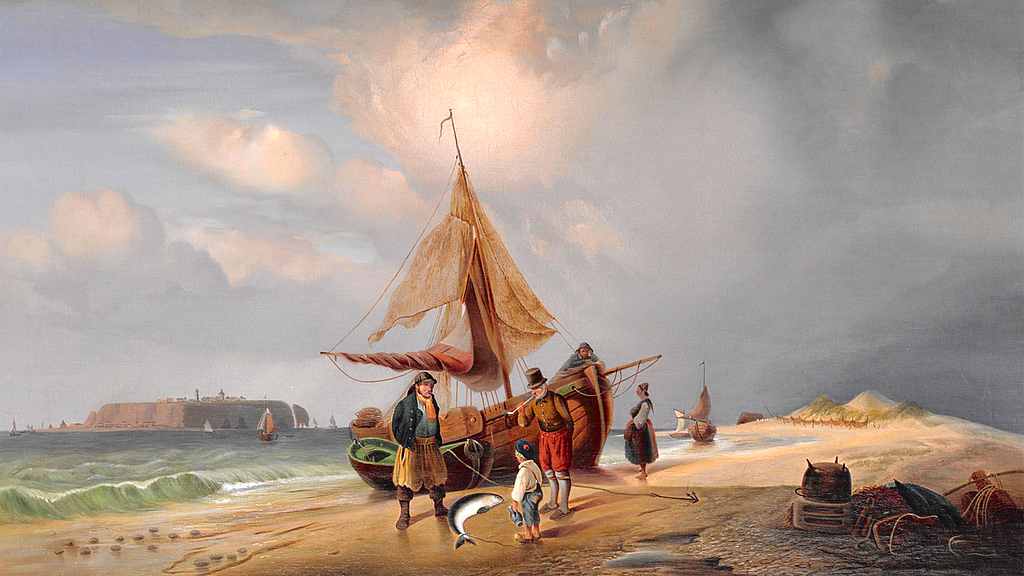
Carl Biedermann, Fischer auf Helgoland (Fishermen at Helgoland), around 1830, DSM
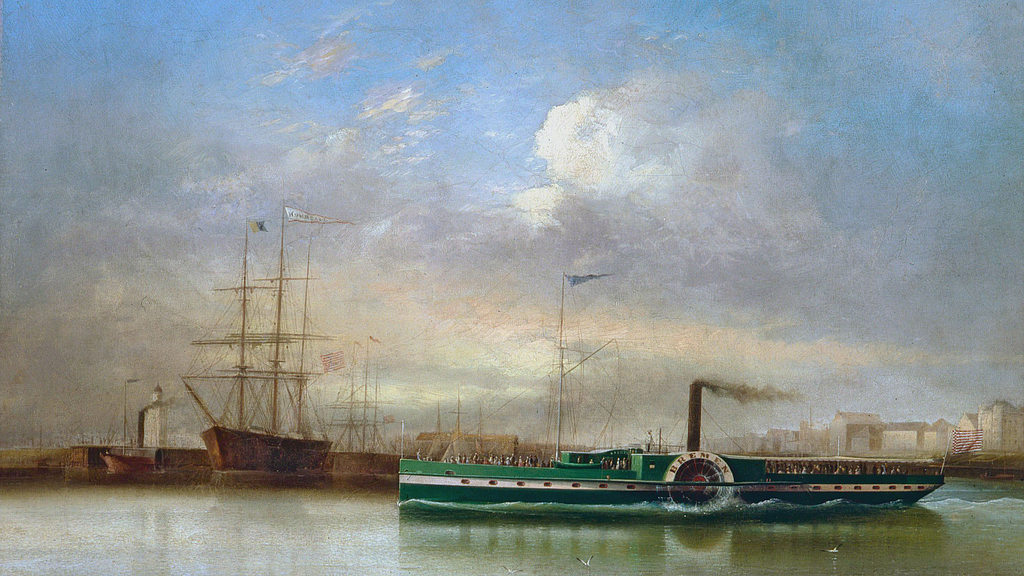
Carl Justus Fedeler, Vor der Geestemündung (Off the Geeste estuary), 1867, DSM
Related articles
-Bibliothek
Die Bibliothek hält eine umfangreiche Sammlung an Titeln zur deutschen Schifffahrtsgeschichte und Meeresnutzung. Im Lesesaal ist die Nutzung der Bestände kostenlos.
Weiterlesen
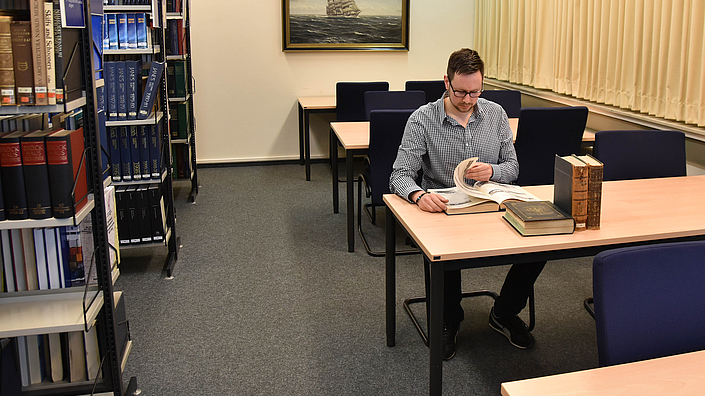
Archiv und Magazin
Unsere Sammlung aus Objekten und Archivalien ist die Grundlage unserer Austellungs- und Forschungsarbeit. Sie können einige der Sammlungsstücke in der Ausstellung oder online sehen.
Weiterlesen
